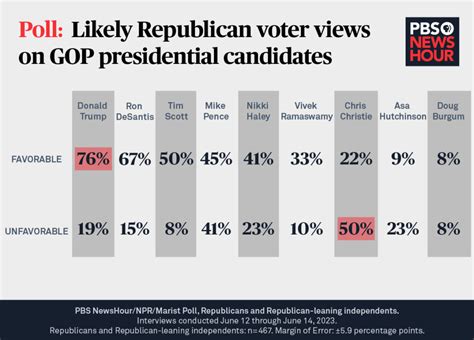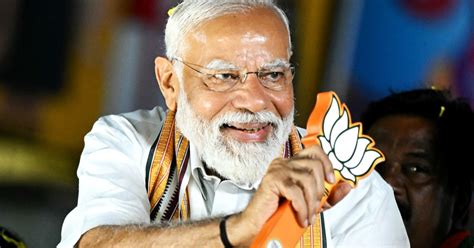Explore key issues, voter demographics, social media’s impact, and strategies for the 2024 polls, plus insights on what voters should anticipate.As the 2024 elections approach, voters find themselves at a crucial crossroads that could shape the future of their communities and the nation. Understanding the dynamics of this electoral cycle is essential for making informed choices. In our article, 2024 Polls: What Voters Need To Watch Out For, we delve into the key issues influencing the polls, break down voter demographics, and analyze the increasing role of social media in shaping public opinion. Additionally, we explore the strategies candidates are employing to connect with voters effectively. With insights into what to anticipate in the upcoming polls, this comprehensive guide aims to equip voters with the knowledge they need to navigate the electoral landscape with confidence. Stay informed and engaged as we unpack the critical elements of the 2024 polling environment.
Key Issues Influencing The 2024 Polls
As the 2024 Polls approach, several key issues are expected to dominate the discussion among voters and candidates alike. Understanding these issues can provide insights into how they might influence voter behavior and election outcomes. Here are some of the most significant factors:
| Issue | Impact on Voters |
|---|---|
| Economic Recovery | With inflation and job growth being primary concerns, how candidates address economic recovery will significantly influence public opinion. |
| Healthcare Access | The ongoing debate around healthcare policies, including affordability and access to services, remains crucial for voters. |
| Climate Change | Voters, especially younger demographics, are increasingly prioritizing policies that address climate change and environmental sustainability. |
| Civil Rights | Issues such as voting rights, police reform, and racial equality are at the forefront of voters’ minds, influencing their choices at the polls. |
| Foreign Policy | International relations, especially regarding major global conflicts, can influence national security perceptions and sway voters’ opinions. |
These key issues will likely frame the discourse in the lead-up to the 2024 Polls, as voters weigh their preferences against candidates’ positions and proposed solutions.
Understanding Voter Demographics In The 2024 Polls
As we approach the 2024 polls, understanding voter demographics will be crucial for both candidates and voters alike. Different demographic factors can significantly influence election outcomes, and this year’s polls are expected to reflect shifts in voting patterns.
One of the primary demographic factors to consider is age. Younger voters, particularly those aged 18-29, have shown an increasing interest in participating in elections. This segment is more likely to advocate for progressive issues such as climate change and social justice, which could impact how candidates tailor their messages during the 2024 polls.
Another vital demographic aspect is race and ethnicity. The diverse makeup of the electorate means that candidates will need to address the specific needs and concerns of minority communities. Engaging these groups effectively can sway a significant portion of votes, especially in battleground states where demographics are changing rapidly.
Furthermore, socioeconomic status plays a critical role in shaping voter behavior. Individuals with lower incomes often prioritize economic issues, whereas higher-income voters may focus on tax policies or healthcare. Understanding these distinctions can help candidates formulate strategies that resonate with different voter segments as we head into the 2024 polls.
The geographic location also influences voter demographics. Urban areas tend to lean more liberal, while rural regions are often more conservative. Candidates will need to adapt their platforms according to the demographics of the areas they are campaigning in, making geography a key player in the upcoming 2024 polls.
The interplay of age, race, socioeconomic status, and geographic location will shape the voter landscape in the 2024 polls. Addressing these demographic factors can be the difference between winning and losing in what promises to be a highly contested election year.
The Role Of Social Media In 2024 Polls
As we approach the 2024 polls, the influence of social media on voter behavior and election outcomes is more critical than ever. Social media platforms have become the primary source of information for many voters, shaping perceptions and opinions in real-time. Here are some key aspects to consider:
- Information Dissemination: Candidates utilize social media to quickly share their messages, manifestos, and campaign events. This rapid dissemination allows voters to stay informed about candidates’ positions on key issues.
- Engagement: Social media facilitates direct interaction between candidates and voters, making it easier for constituents to engage with political figures, ask questions, and express their concerns.
- Targeted Advertising: Campaigns can use social media to target specific demographics with tailored ads based on location, age, interests, and previous voting behaviors. This targeted approach can significantly influence campaign effectiveness.
- Mobilization: Social media serves as a platform for organizing events, sharing information about where and how to vote, and encouraging voter turnout. Candidates often use these channels to foster a sense of community among supporters.
- Disinformation Challenges: While social media offers positive aspects, it also poses challenges. The spread of misinformation and fake news can sway public opinion and create confusion among voters. Addressing this issue is essential for a fair electoral process.
Considering these factors, the impact of social media on the 2024 polls will likely play a pivotal role in shaping the electoral landscape. Voters should be vigilant about the information they consume and engage with, ensuring they are adequately informed and prepared to make decisions that align with their values and beliefs.
Strategies Candidates Use For 2024 Polls
As the competition heats up in the 2024 Polls, candidates are expected to employ a variety of innovative strategies to connect with voters and enhance their chances of success. These strategies are essential for navigating the complex electoral landscape and driving support. Below are some key tactics that are anticipated to be at the forefront of this election cycle:
- Data-Driven Campaigns: Candidates are increasingly relying on big data analytics to understand voter behavior and preferences. By analyzing demographic information and polling data, campaigns can tailor their messages to resonate with specific voter segments.
- Grassroots Mobilization: Building a strong grassroots movement is crucial. Engaging volunteers to organize events, canvas neighborhoods, and drive voter turnout is a strategy many candidates will prioritize.
- Targeted Advertising: Utilizing platforms such as social media and digital advertising allows candidates to target specific demographics with personalized messages. This tactic is critical in making sure they reach potential supporters effectively.
- Influencer Partnerships: Collaborating with social media influencers can amplify a candidate’s reach, especially among younger voters. Influencers can help convey the candidate’s message in a relatable and engaging manner.
- Real-Time Feedback: Candidates are likely to use social media platforms to gather real-time feedback on their policies and campaign efforts. This allows them to react quickly to shifts in public opinion and adjust their strategies accordingly.
- Video Content: Video content continues to be a dominant form of communication. Candidates will likely invest in high-quality video production to share their messages, showcasing their personalities through live streams, interviews, and campaign vlogs.
- Issue Advocacy: Focusing on specific issues that matter to voters—such as healthcare, education, and the economy—will be key. Candidates must frame their positions compellingly without alienating other voter bases.
- Community Engagement: Attending town halls, community events, and public forums will help candidates to engage directly with voters, addressing their concerns and showing genuine interest in the electorate.
The strategies that candidates employ during the 2024 Polls will be varied and dynamic, reflecting the need for adaptability in an ever-evolving political climate. Successful candidates will leverage a combination of traditional campaigning methods and modern technology to capture voter attention and support.
What Voters Should Anticipate In The 2024 Polls
As the 2024 polls draw near, voters should prepare for a dynamic electoral landscape marked by several key developments. Here are some critical aspects to keep an eye on:
Increased Political Ads: Expect to see a surge in political advertisements across multiple platforms, including television, online, and social media. Candidates will likely invest heavily in reaching targeted demographics, making ad frequency and messaging crucial to campaign strategies.
Voter Turnout Initiatives: Given the importance of voter participation, various organizations and candidates will ramp up efforts to mobilize voters. Look for increased campaigns focused on registration drives and early voting initiatives aimed at making the voting process more accessible.
Impact of Key Issues: Critical issues such as the economy, healthcare, social justice, and climate change are expected to influence voter behavior significantly. Candidates will tailor their messages to resonate with voter concerns, making these issues a focal point during debates and public appearances.
Polling Methodology Changes: Watch for potential shifts in polling methodologies. With the rise of online surveys and interactive polls, there may be a change in how data is collected and interpreted, which could affect the accuracy of poll results.
ID Requirements and Voting Access: Different states will have varied voting laws and ID requirements that could impact voter turnout. Voters should stay informed about the regulations in their state to ensure they can participate in the 2024 polls without obstacles.
Media Coverage: The role of traditional and online media will be critical in shaping public perception of candidates. Be aware that certain narratives may dominate coverage, influencing voter opinions and decision-making as the election date approaches.
Real-time Polling Updates: Expect a plethora of real-time polling updates leading up to the elections. These updates can shift public sentiment and may lead to momentum changes for certain candidates, making it essential to interpret these numbers carefully.
The 2024 polls promise to be a significant event characterized by intense campaigning, evolving voter concerns, and diverse methodologies. Staying informed and engaged will be vital for voters looking to navigate this complex electoral landscape effectively.
Frequently Asked Questions
What are the key issues that will influence the 2024 elections?
Key issues include the economy, healthcare, climate change, immigration, and social justice, all of which will significantly shape voter decisions.
How can voters ensure their voices are heard in the 2024 polls?
Voters can ensure their voices are heard by registering to vote, participating in primary elections, and staying informed about candidate platforms and local measures.
What role do swing states play in the 2024 elections?
Swing states play a critical role as they can be won by either major political party in the general election, making them focal points for campaigning and influencing national outcomes.
Why is voter turnout important in the 2024 elections?
Voter turnout is crucial because higher participation often reflects broader public engagement and can determine the election’s outcome, especially in closely contested areas.
What are some common voting methods voters can use in the 2024 elections?
Common voting methods include in-person voting on Election Day, early voting, and mail-in voting, each with its own rules and deadlines.
How might misinformation impact the 2024 elections?
Misinformation can lead to voter confusion, apathy, or misinformed decisions, making it essential for voters to rely on credible sources for information.
What resources are available for voters to learn about candidates and issues?
Voters can access resources such as official state election websites, non-partisan voter guides, and fact-checking organizations to learn about candidates and issues on the ballot.








